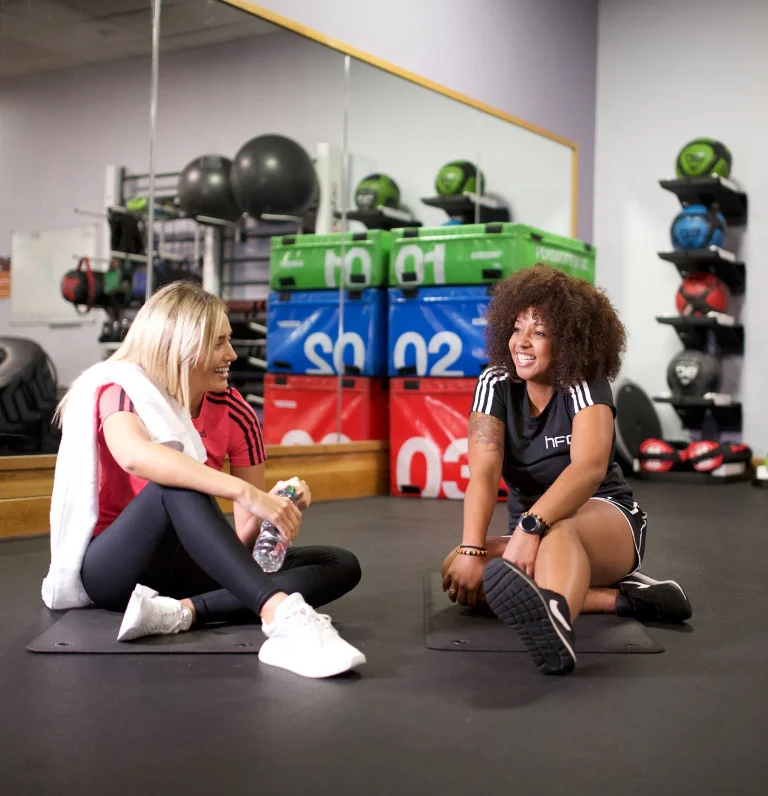The squat is one of the most primal and natural movements known to man (and woman) and we humans have been squatting since the beginning of our time. Unfortunately however, as technology advances and we become ever more sedentary, fewer and fewer people are able to perform the squat properly.
Before the great man that was Thomas Crapper popularised the toilet in the 19th century, people squatted several times a day without even thinking about it. Nowadays however, if you asked the average person to perform a full or deep squat, they’d probably end up on their back!
As an exercise, squatting is incredibly functional because there are elements of the squat pattern that are engrained in so many other daily activities. Getting into and out of the car for example, sitting and standing from a chair or even climbing the stairs all involve patterns of muscle recruitment that approximate the squat technique. If we become better at squatting therefore, these benefits are transferred and we also perform better when performing these activities. How many people do you see falling into a chair, or thrusting their bodyweight forward to stand up? These people are in desperate need of a squat programme!
Even though the squat provides so much value, there are still many exercise professionals that don’t prescribe it, and instead on the grounds of safety promote machine-based exercises like the leg press and leg extension. Ironically however, these people often present with more dysfunction, muscular imbalances and pain than those who squat. It is beyond the scope of this article to explore the perils of resistance machines per se, but just in case you are interested, take a look at the following article: Assassinate the Leg Extension
The squat is a bilateral leg-dominant exercise that challenges the ability of the quadriceps, hamstrings and gluteals to control hip and knee flexion and extension simultaneously. When performed on a single leg however, the exercise is unilateral and as such requires considerably more stabilising strength to control the movement. Even though the exercise is leg-dominant, it is also effective for strengthening other bodily areas, particularly the core.
Squats can be performed in an almost endless number of ways and can also be integrated with many other exercises to make them harder, easier, or just for variety. Resistance can be generated from bodyweight (yours or somebody else’s), a bar, dumbbell(s), stability ball, medicine ball, kettlebell(s), sandbell or any other form of external load. The resistance can be applied to the front, back, or side, changing the mechanical and muscular demands of the movement yet again.
The exercise can be performed slowly to develop controlled strength, or quickly to promote explosive power. Squats can even be combined with a jump at full extension, as is the case with many plyometric versions to maximise the power value of the movement. The overhead squat is the ultimate test of integrated strength, stability and mobility, which is why it is an essential component of the Functional Movement Screen (Cook, 2001).
When using squats as part of a wider-exercise programme, a range of techniques should be used in order to vary the load and prevent the onset of overuse injuries.
Bodyweight squats should always be used as a starting point for those who aren’t used to squatting, or those who just aren’t able to squat properly. Only when a pain free and healthy range of motion can be performed should external load be applied.
For those who have a history of back pain, especially when it is disc-related, back squats should be avoided because axial loading (applying weight on the axial skeleton) is generally contraindicated and will only serve to cause more pain.
Some suggest that the squat shouldn’t be performed past 90 degrees, or beyond the point at which the thighs become parallel to the ground. The primary justification for this advice is to reduce the risk of knee injury and pain, particularly that associated with the cruciate ligaments. There is however a considerable amount of evidence to conclude that this advice is at best erroneous, and many of those who do perform deep squats have a much greater stability of the knee joint than those who do not.
Go forth and squat… you won’t look back!

